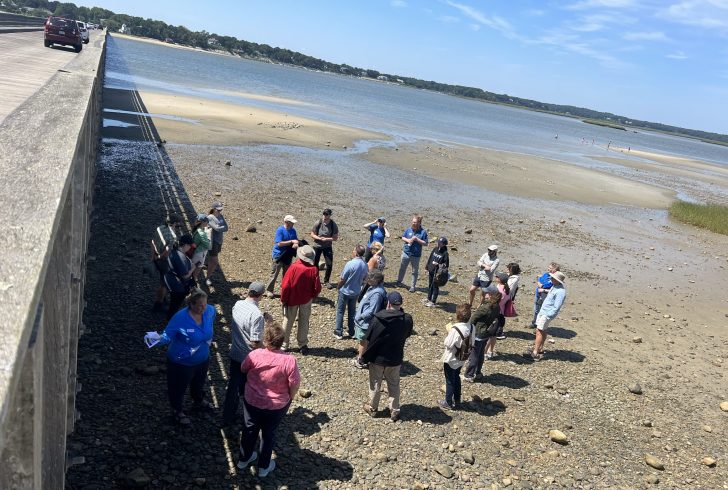June 2024 marked two years since the Lab’s cobble berms research, monitoring, and education project began. Over the course of the project thus far, staff from the Stone Living Lab, Duxbury Beach Reservation, and Woods Hole Group have led research, monitoring, and education efforts at cobble berm sites across coastal Massachusetts. The project has been supported by various funding sources, including a MA CZM Coastal Resilience grant.
Key research findings so far from the analysis of the project’s monitoring data include:
- Where existing salt marsh was monitored in proximity to the installed cobble berm, no measured loss was shown on the landward side of the marsh. There was some evidence of loss/degradation along the seaward edge of one of the marsh stands, but this was not due to the cobble berm, which was located landward of the marsh. At the other site, no change in salt marsh areas was observed over the 2 years.
- Full community species richness was higher in the summer at berm sites as compared to controls (no cobble berm sites) across all locations. Richness had the largest increase at Coughlin Park cobble berm site. Overall the cobble berms indicate a positive impact on total species richness, or at minimum no change to species richness at the observed sites.
- Biodiversity, which incorporates abundance in addition to richness, increased on cobble berms when compared to control units.
- Neither richness of organisms nor biodiversity changed with season. Meaning these observational metrics remained higher at the cobble berm sites than at the control (no cobble berm sites) for all sample events.
- Our monitoring data show that cobble berms do not have a negative impact on species diversity in an area and are a potential solution for a nature-based approach in New England at viable locations.
- At nearly all of the monitored sites, the individual cobbles were observed to move landward, not seaward.
- Sites were shown to effectively protect the shorelines (and reduce erosion) at all locations.
A more detailed, comprehensive summary of all the research and monitoring data is being prepared, including more details on the movement and geomorphic change of the cobble berms, and key highlights will be detailed in the Fall 2024 Quarterly Summary.

